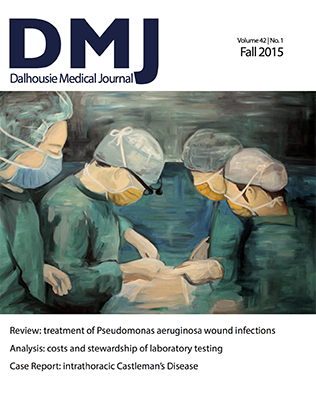Student use of self-directed learning time in an undergraduate medical curriculum
DOI:
https://doi.org/10.15273/dmj.Vol42No1.6443Abstract
Introduction: In 2010, Dalhousie University implemented a new MD curriculum, placing an emphasis on self-directed learning (SDL) time. This study sought to understand how students use this time and whether they would benefit from more structure during SDL. We hypothesized that students spend significant amounts of SDL time on non- academic activities and would prefer to have more specific guidance and tasks.
Methods: Pre-clerkship medical students at Dalhousie (n=223) were sent an online survey consisting of 18 questions using a combination of Likert scales, and text boxes for qualitative responses. Chi-square analysis was performed for each survey question.
Results: Eighty-five percent (n=93) of medical students responded that time scheduled for SDL was sufficient (p<0.001) and 67% (n=73) responded that they would benefit from more specific guidance and tasks during SDL time (p<0.001). Forty-five percent responded that they “rarely” spent SDL time on non-academic activities (n=49), however only 14% (n=15) responded “most of the time” (p<0.001).
Conclusion: The majority of respondents used SDL time for academic activities but felt they would benefit from more specific guidance and tasks. This is inconsistent with our hypothesis that students are spending significant amounts of SDL time on non-academic activities, but supports our hypothesis that students would prefer more structure.
Downloads
Published
How to Cite
Issue
Section
License
Authors who publish with this journal agree to the following terms:
- Authors retain copyright and grant the journal right of first publication with the work simultaneously licensed under a Creative Commons Attribution License that allows others to share the work with an acknowledgement of the work's authorship and initial publication in this journal.
- Authors are able to enter into separate, additional contractual arrangements for the non-exclusive distribution of the journal's published version of the work (e.g., post it to an institutional repository or publish it in a book), with an acknowledgement of its initial publication in this journal.
- Authors are permitted and encouraged to post their work online (e.g., in institutional repositories or on their website) prior to and during the submission process, as it can lead to productive exchanges, as well as earlier and greater citation of published work (See The Effect of Open Access).


